

The workshops of Classical Athens were normally in one of the rooms or the yard of the craftsman's house. There are however instances of purpose-built workshops to house craftsmen contracted for a particular job - for example, the sculptors working on the pediments of the Parthenon. Excavations in various parts of Athens have turned up leftover building materials and portable objects which suggest that there were workshops there. The types of workshops represented are those of potters, sculptors, specialists in terracotta, metalworkers, blacksmiths, and cobblers.
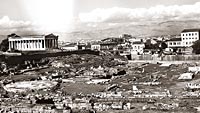 |
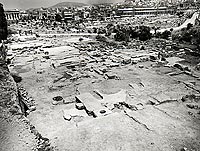 |
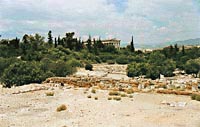 |
The metalsmiths' workshops were clustered around the Agora, as we can tell from the group of foundry pits for bronze statues discovered there. Excavations have also revealed openings in the bare rock where statue moulds were placed. It is most probable that bronze statues were made in the outlying workshops on the slopes of Kolonos Hill. Remains of fourth-century bronze founding workshops have been found to the north and south-west of the Temple of Hephaistos. A bronzefounding pit on the west side of the area in front of the temple is thought to have been the one used to cast the bronze statues of Hephaistos and Athena that stood inside the temple.
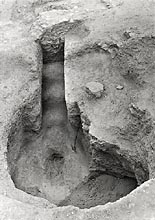 |
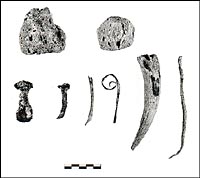 |
|
The workshops of the coroplasts were on the north and west slopes of Areopagos hill, from the fourth century B.C. through to the Hellenistic period. Clay moulds (for making statuettes and relief slabs) found in abandoned dumps and domestic water tanks show that terracottas were made in this area. |
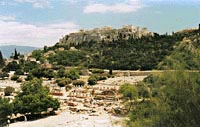 |
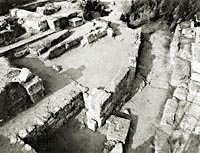 |
The ruins of a building known as Simon [450-410 B.C.] the Shoemaker's House was found at the south-west corner of the Agora. Although the building was inhabited for two centuries, very little of it survives. The best preserved part is a courtyard on the north-east side. Objects found there included potsherds, clay lamps, and coins - and also a number of little flat headed iron tacks and small bone rings. These are thought to be attachments for leather boots. Another strong indication that the house was a cobbler's workshop is a worn-down stone that must have been used by the craftsman to sharpen his knife on. The name 'Simon' was written in capital letters on the foot of a kylix from the third quarter of the fifth century B.C. that was found on site, which leads us to the conclusion that the owner of the workshop was called Simon. This tallies with references by Plutarch and Diogenes Laertius to a cobbler called Simon: both Pericles and Socrates found him 'an entertaining person'. |
The blacksmiths apparently settled north of the Temple of Hephaistos - where large quantities of scoria were found - and to the north of Kolonos-in-the-Agora.
While industrial activity in Classical Athens was concentrated in the area around the Temple of Hephaistos, there were a large number of workshops between the Hill of the Nymphs and Areopagus hill. The presence of craftsmen in this area, especially of those working in metal, is linked with the worship of Hephaistos, god of metals and metalwork.
Some scholars have claimed that during the boom years for craftsmen in Attica, the businesses established were usually specialist ones. But judging by both the archaeological and literary evidence, most of the businesses were small family concerns employing from five to eight workers, with the craft being passed on from father to son. It could be argued that bigger teams may have been formed depending on the volume of orders and the needs of the consumer. But normally, the permanent work force of the workshop was the craftsman, his family, and the slaves. Further craftsmen could be called in if necessary, and were paid individually.
 |
 |
|
| |
|||
| |||